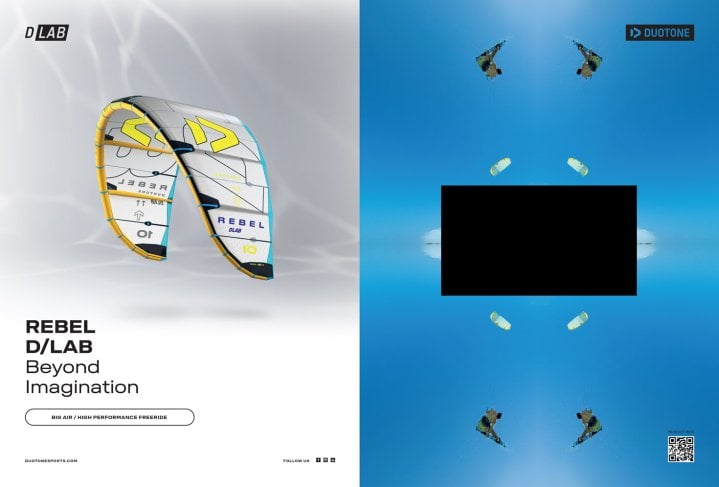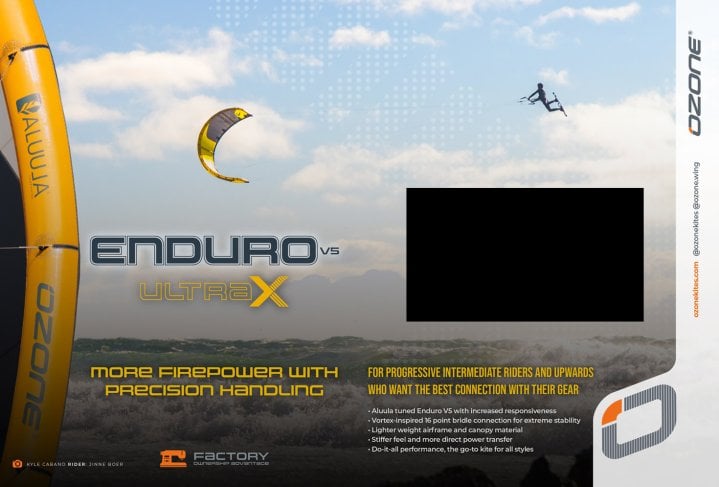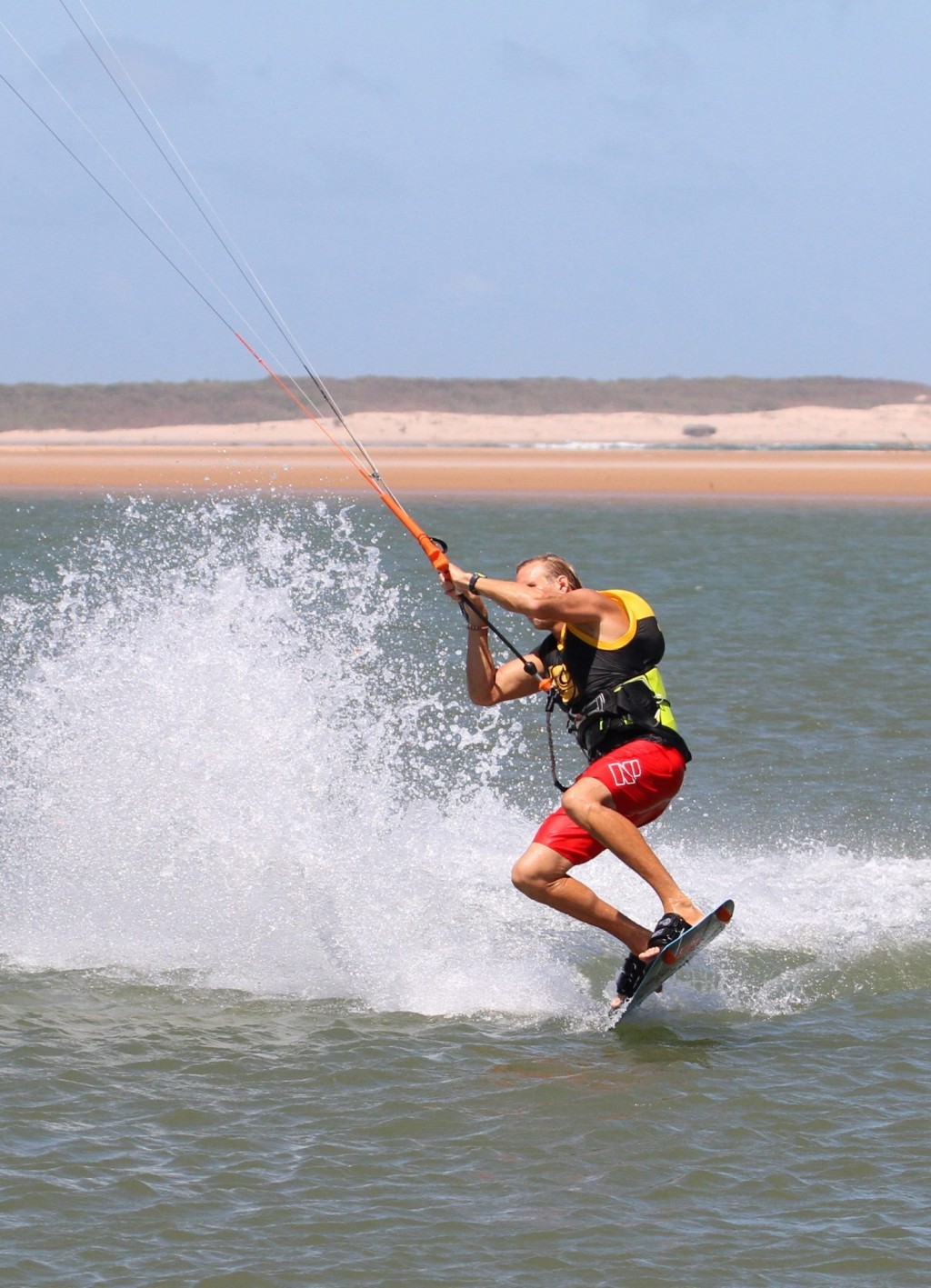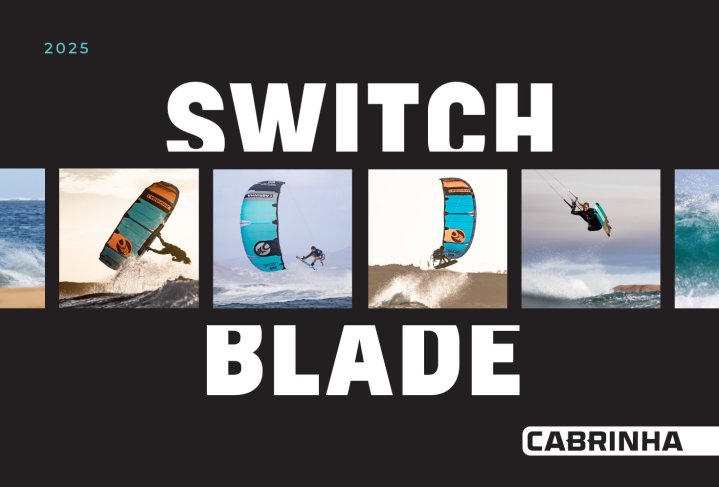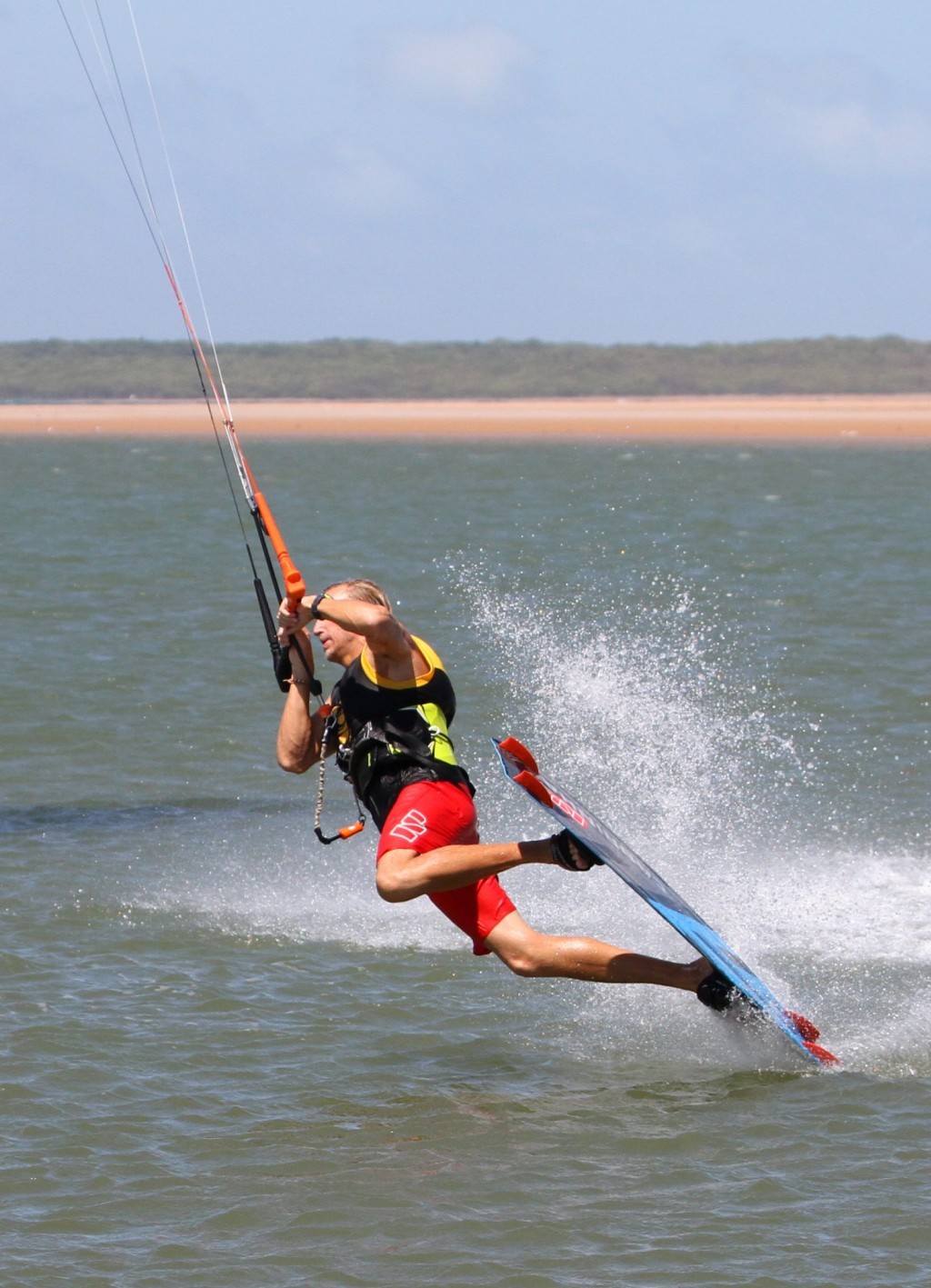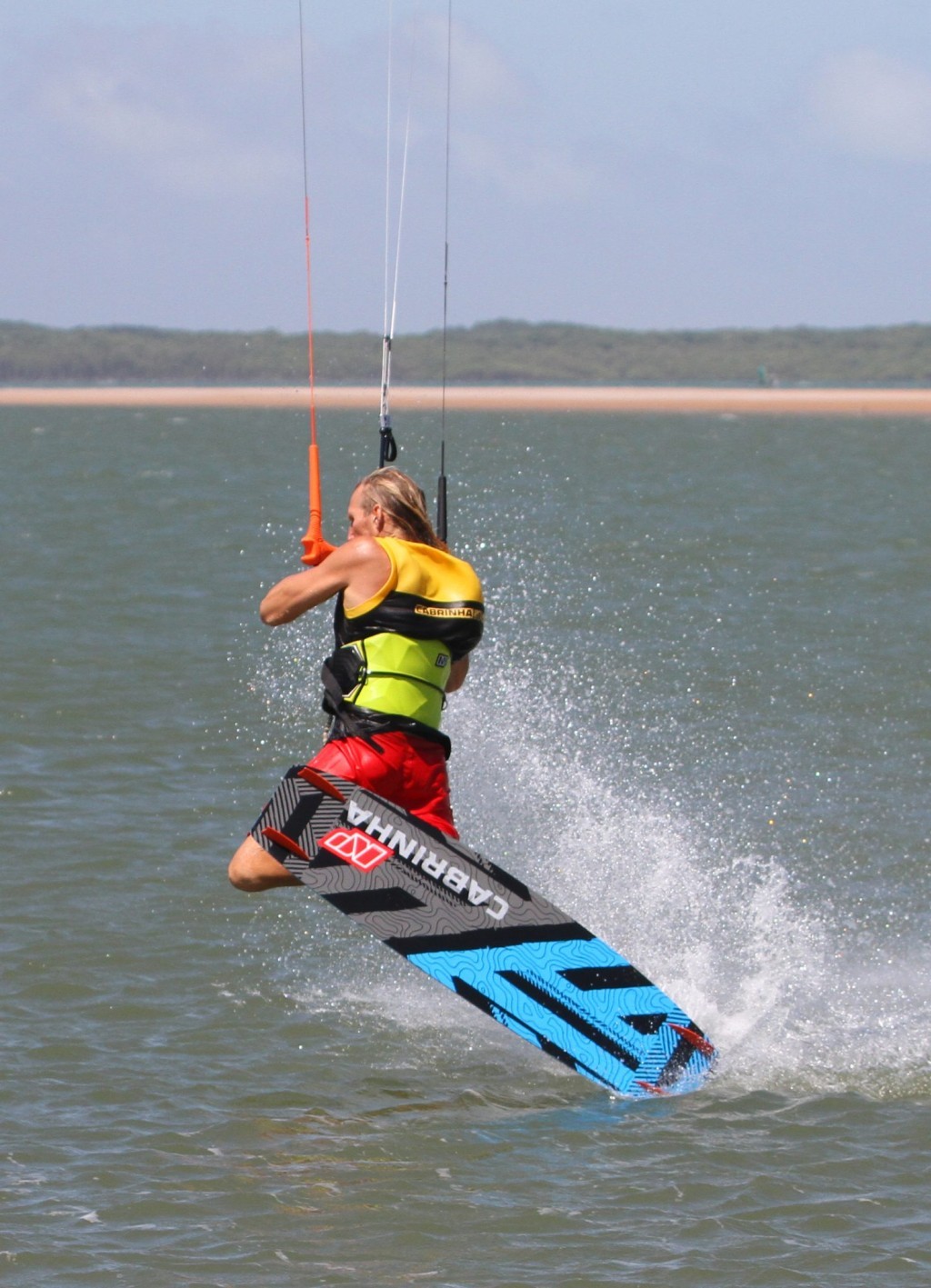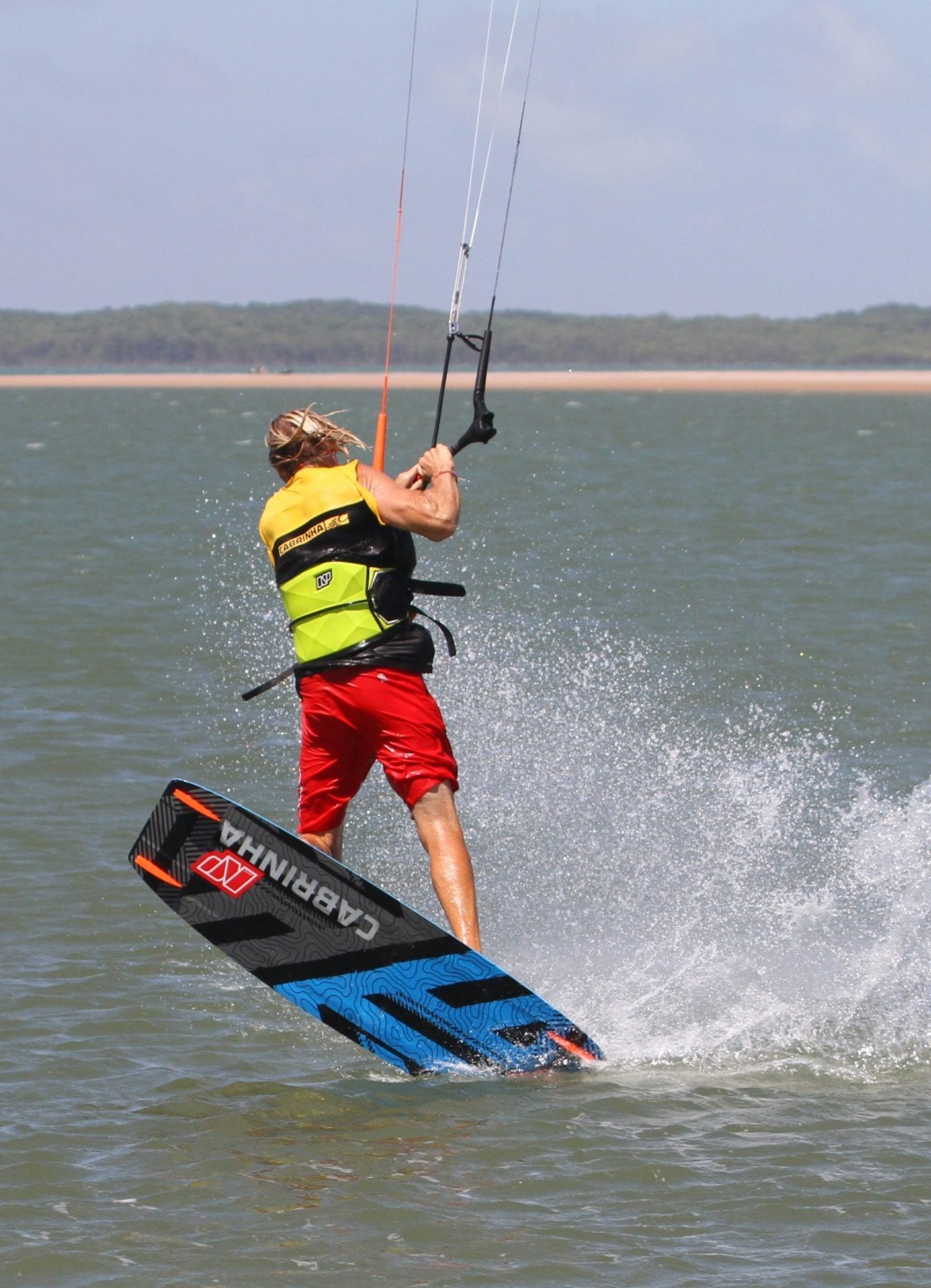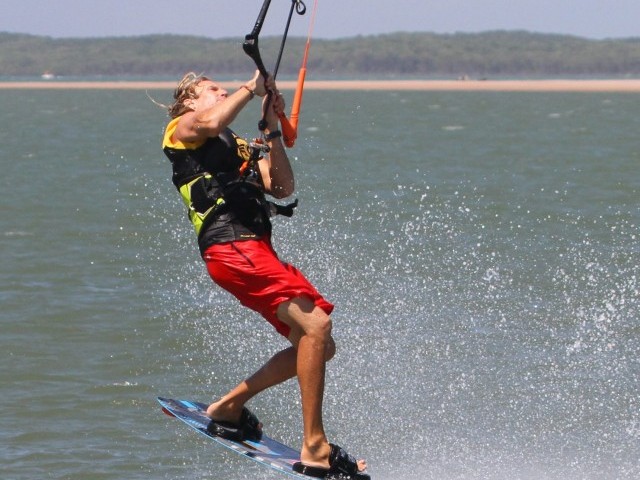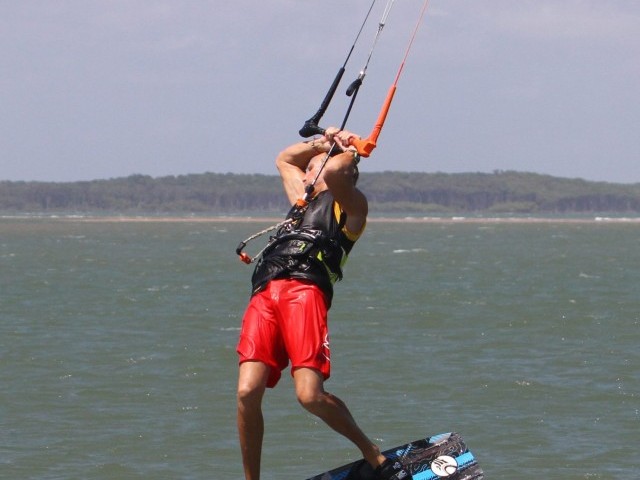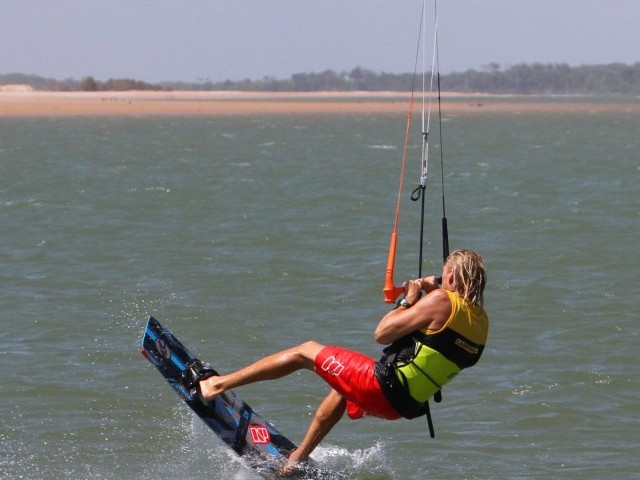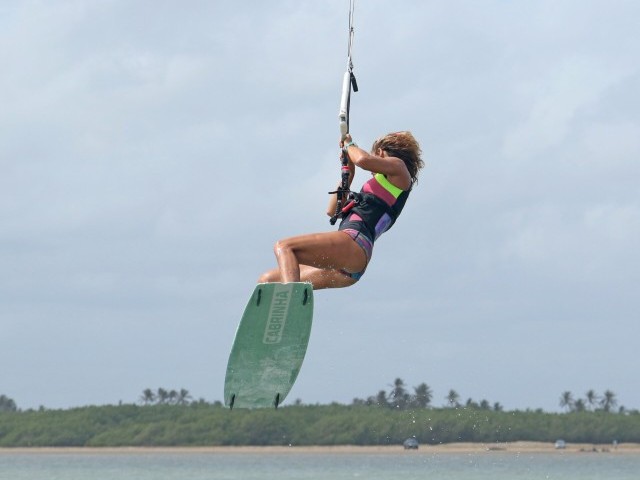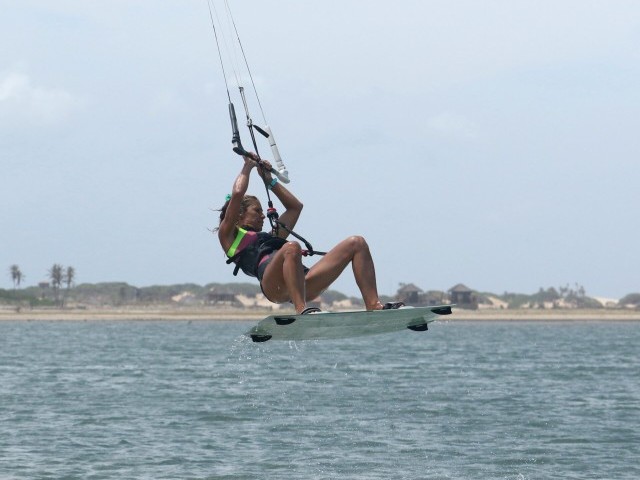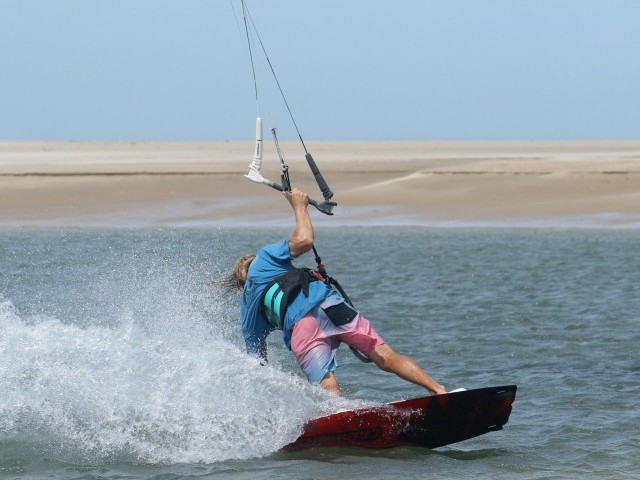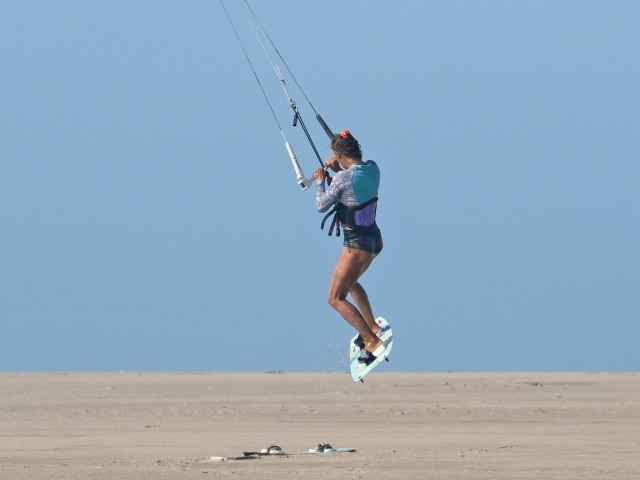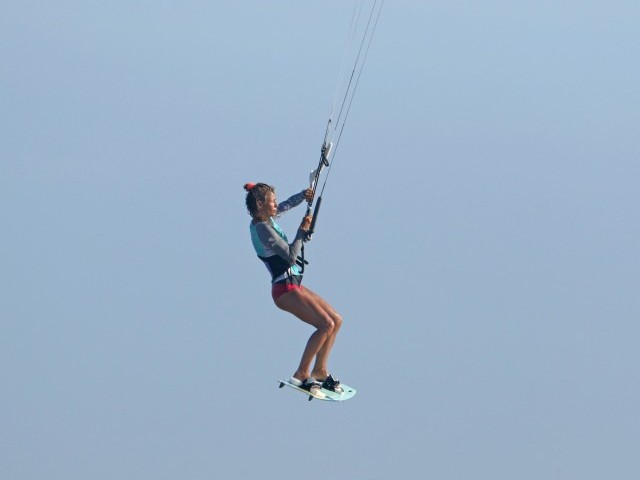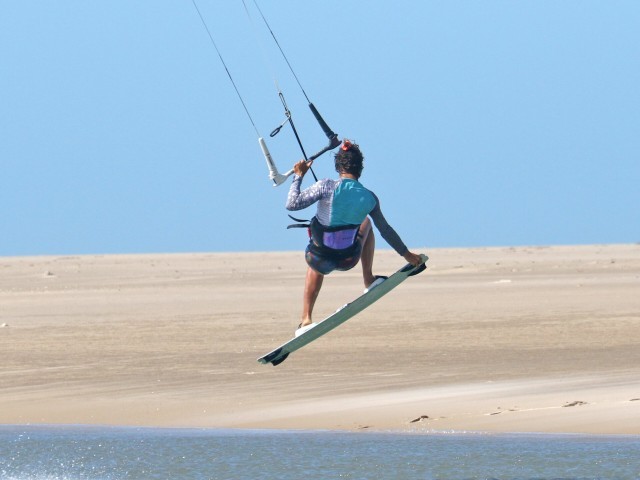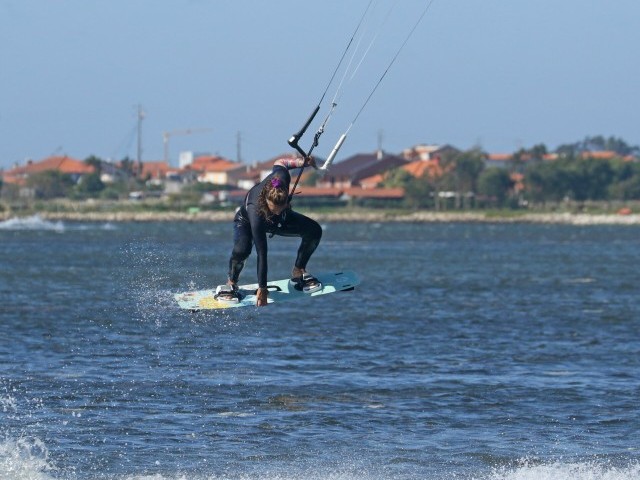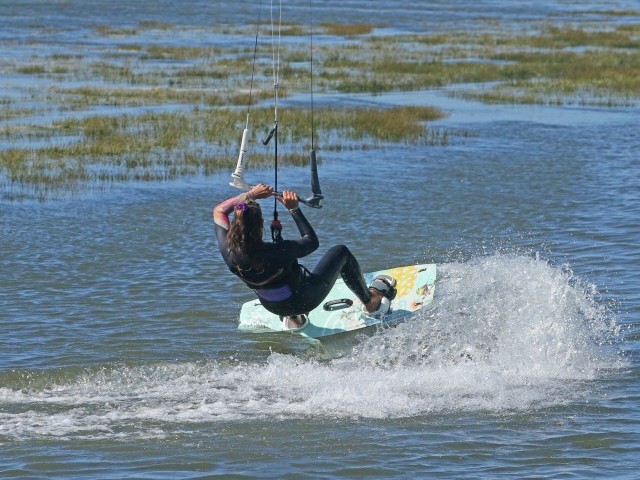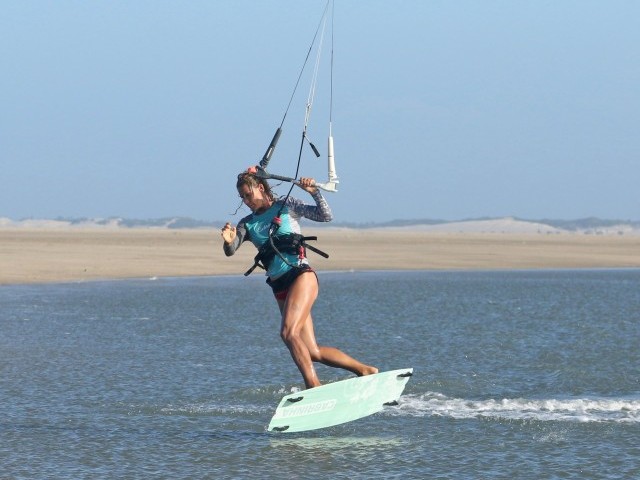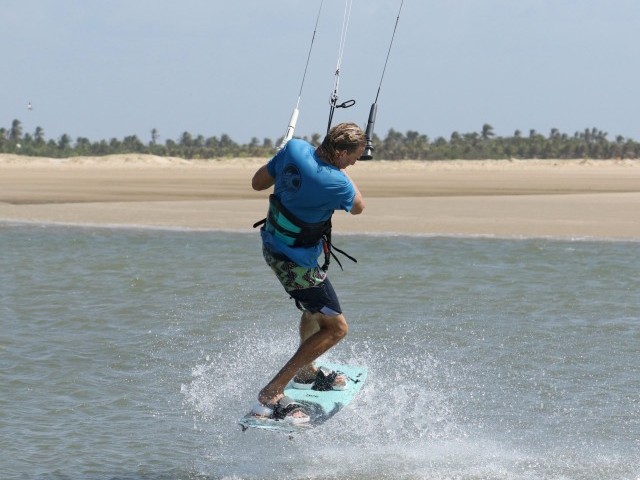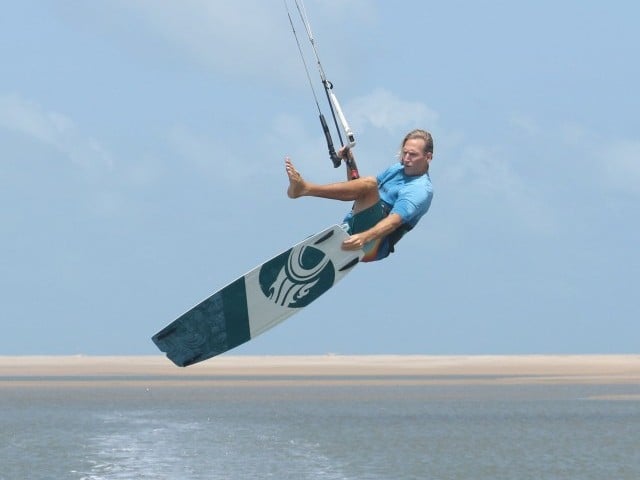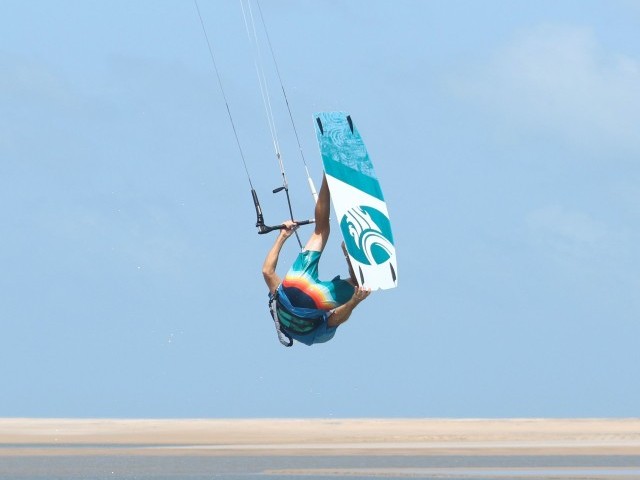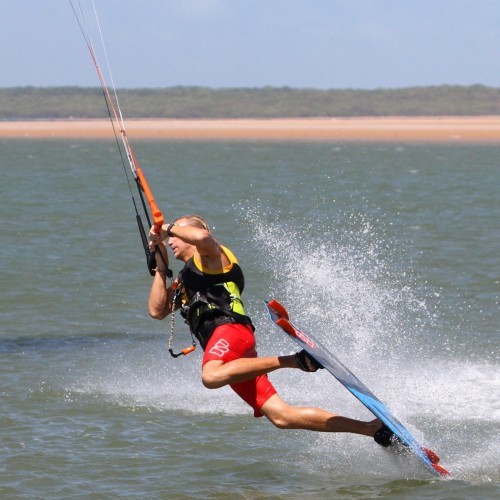
Darkslide Front
Technique / Intermediate
Introduction
It can be easy to take kiting for granted, a bad session when you don’t feel comfortable, perhaps the wind’s not quite right, you’re off you’re A Game, and in the end, the lawn gets a pretty good mowing. Sometimes it’s worth giving ourselves a nudge and remember just why kiting can have such a strong hold and just why we got so consumed by it in the first place. This move is such a reminder. How many sports can you think of, where adding skills together equates to even more tricks, an almost infinite number at that, which can be achieved and mastered by hobbyists with day jobs. That’s kiting, and this is another Darkslide progression, with a front rotation to finish.
Suffice to say; it’s full steam ahead. To make this more manageable there is a particular method that you should aim for with your Darkslide. You want to be ever so slightly upright, and keep your head above the bar. This is, of course, a slight contradiction as we know that if you hold yourself forwards over the bar, you’re more likely to catch all your board and stop rather than slide. Time for a cheeky peak at how you can perfect and learn this.
Cinderella Pic A.
Cast your mind back to the formative sessions of your Darkslide development. If you didn’t move the kite up enough and started with the kite still too low in the window, the result would be you sliding on a lot of the board, your knees and with your weight on your front hand. This forward position with a better slide is what you’re after. The key here is to get into your darkslide early before the kite reaches 12 o’clock and your carriage turns into a pumpkin! Realistically, unless you’re on a large, lifty kite, you can only trip yourself with the kite around 11:30 or 12:30 or a tiny bit lower (that’s really early), if you have enough speed to offer plenty of apparent wind in the kite. And you will need enough power so that you can trim the bar out without the kite stalling. This is why being proficient in the dark arts already is helpful. In the pic, Christian has a lot of spray, as he comes in with speed and a good edge to control it. Keeping his bum low, he can then push the bar out, carve up and trip himself. By carving up, his weight will be back enough to keep the nose up even if he leans forwards onto the bar.
Posture Pic B.
As the board bites, this is where you want to be. Looking at the image Christian has tripped his lower body, but his upper body is quite upright. With the bar pulled in, he’s holding his shoulders up, eyes above the bar, and head somewhere between the bar end and the chicken loop. This way he can control the drifting of the kite, as he doesn’t want it to go too far back, nor move too quickly. However, his weight is back just enough to keep the nose of the board up. In a normal slide, you’d have you back shoulder rolling down towards the water, but from that position, it would be very hard to start a forward rotation. As you slide, you must anticipate the loss of lift in the kite so you can move onto the next step. As you develop, the skill here is to delay that loss of lift for as long as possible by digging the board in for tension and moving the kite super slowly.
Onwards & Upwards Pic C.
Once you feel the kite lowering you, that’s your queue to get up off the water. If you learnt to Darkslide with the kite forward finish, you should be accustomed to this. Admittedly this lifting is a lot simpler if you’ve got power in the kite – being underpowered will mean that you won’t get as much lift. To get lift, you need to send the kite forwards towards 11 or 1 o’clock, depending on which direction you’re travelling in. This can be trickier than it sounds because you’ll be hanging onto the bar, so pulling on your front hand won’t do much unless you release the pressure on your back hand. Here Christian is holding himself right over the bar, looking forwards while he starts to redirect the kite forwards. It’s important that the board is still edging so that there’s enough resistance to move the kite with enough force so that it’ll lift you as it passes back over 12 o’clock. This part is very similar to the board behind water start.
The Throw Down Pic D.
Once the kite starts to lift you, it’s all about initiating the rotation. This is, of course, the crux of the trick. What makes this challenging is that you can’t kick yourself forwards as you normally would for a forward rotation because your back foot is dragging behind you! The only way in which you can conjure a rotation is to throw your head and shoulders down towards the nose of the board. This needs to be forceful. In the photo, Christian is throwing his head and front shoulder down as aggressively as he can. Combined with the lift from the kite he can fulcrum himself through the harness so that all his weight moves forwards in front of the bar which will start to turn him. The timing of this is also important. It needs to coincide with the kite lifting. This means that as you throw down the kite is picking you up. If you’re late and the kite has passed forwards of 12 o’clock, it’s very difficult to get your weight in front of the bar and thus you won’t rotate. A final note here is that Christian has the bar in and is still redirecting the kite forward.
Head Leads Pic E.
We’ve included this photo as it shows the effort, force and continuation of the previous Throw Down. Christian’s head is forced down onto his left shoulder as if he were head butting a football. His facial expression, with eyes closed, demonstrates the effort involved. However, once he’s rotating like this, you can see that he’s started to turn his head back towards the camera to increase his rotation and lead it into more of a horizontal 360° spin rather than an end over end somersault. At the same time, he’s diving the kite forwards to keep him moving.
Handy Work Pic F.
Your throw and head are only going to get you so far around the rotation. Without the ability to kick this is the point that is attainable before we’re obliged to fire the thrusters to complete our mission. This image looks quite ungainly and dangly, and it is. A result of the need to force yourself around. Christian is leading with his head, but his body has slowed and is stalling, hips facing upwind even though he can see the water where he wants to land. It’s now down to your hands. With your head spotting your landing and your rotation slowing drastically, you need to push the bar around with your hands. As long as the bar passes through the full rotation, so will you. From here on in Christian is trying to get his palms facing downwind, pushing the bar through first. If you do this the rest will follow…
Top to Tail Pic G.
If all goes to plan this is the result. Landing back on the tail of the board where it all started pre-trip. With the bar pushed all the way around, you’ll then be able to pull your knees and the board the rest of the way through the rotation. If you’ve redirected the kite enough, it’ll be pulling you nicely for a downwind landing. Christian has spun around, the board is now leading, and as the tail digs in, he’ll pivot the rest of the way around and sail off towards the kite:).
Top Tips
Your real challenge in this move should be the rotation, don’t get too greedy, so go easy on the slide. As long as you get sliding a bit, it’s fine. If you try and get too much length, you’ll most likely move the kite too far back which in turn will make the rest far more difficult. Baby step! Once you nail the rotation, you can elongate your slide for extra style.
Remember that your normal Darkslide position will encourage a back rotation. Therefore, concentrate on keeping your weight further forward and over the bar, so you’re ready to throw your head and shoulders down.
Now have a good look at the sequence and videos to prepare yourself.
Common Problems
If you’re not getting lifted when you send the kite forwards, the chances are that you’re sliding on the top of your board or foot straps. You need tension, so make sure you get the edge in by getting your weight a tad further back when you trip.
If you’re not getting any rotation make sure that you’re really throwing your head and shoulders down towards the nose of the board. Turning your head won’t do anything.
You’re getting the rotation started but then keep landing on your back, slightly inverted. This is the classic. It’s a result of letting the kite drift too far back during the slide. The result is that with the bar pulled in, when you send it forwards for lift, the kite cuts the top of the window rather than travelling up and over 12. This gives a lot of downwind pull which invariably means it’ll kill your rotation and dump you unceremoniously on your shoulders. The same often happens if you’re underpowered as the kite tends to stall.
You get all the way around but get nailed on landing. Unfortunately, as with many kiting moves, the kite does require some flying, you can’t always just pull and hope for the best. To get lift out of the slide you need to be aggressive, but then the kite may be moving too quickly into a dive while you’re still rotating, especially on smaller sizes. In this case, you will have to relax your pull or let the bar out a touch as you rotate.
Key Stones
- Fast and early slide.
- Keep shoulders up and head forward.
- Send kite as soon as lift decreases.
- Throw head and front shoulder down with everything you’ve got.
- Lead with head & push bar around with hands.
This technique article was in Issue 63 of IKSURFMAG.
Related
By Christian and Karine
Christian and Karine have been working together as a coaching team, running improver to advanced kitesurfing clinics since 2003.




